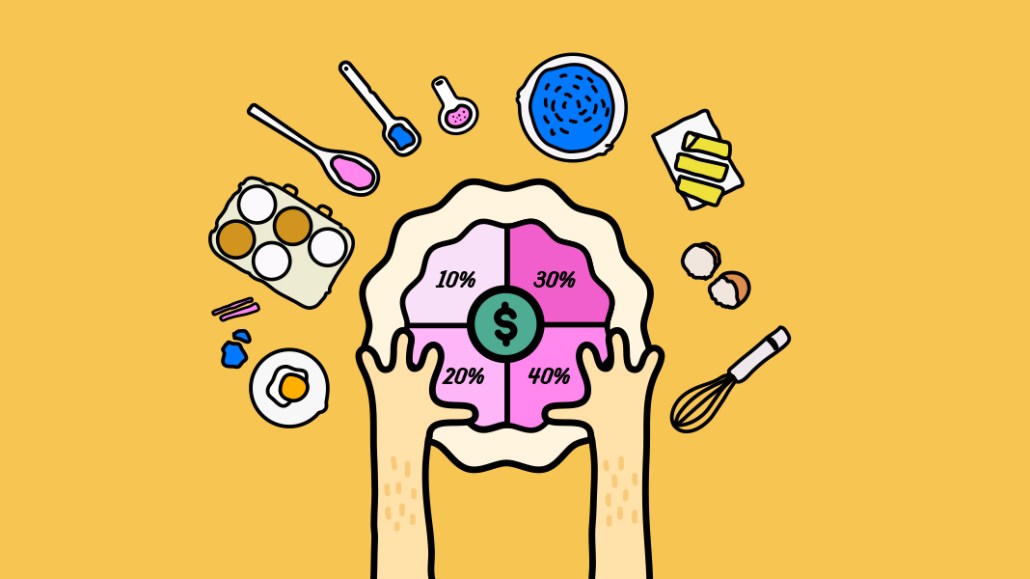Save 50% on a 3-month Digiday+ membership. Ends Dec 5.

BuzzFeed launched Tasty as an experiment in figuring out how to crack Facebook video in July 2015. Today, that experiment has become one of BuzzFeed’s most successful franchises, expanding beyond hands-in-pans videos and into licensed products, a creators program and both long-form and short-form videos and productions.
Today, Tasty has more than 100 million followers on Facebook and has sold 800,000 copies of its first three cookbooks. A fourth was published just last month. BuzzFeed declined to disclose exact revenue numbers but a spokesperson said BuzzFeed, overall, has been profitable for the back half of 2019, “and Tasty continues to be a key driver of that growth with a strong advertising business and a wide range of consumer products through its fast-growing licensing business.”
In 2018, BuzzFeed reported revenues of a little more than $300 million and earlier this year, BuzzFeed CEO Jonah Peretti said in an internal memo that a third of those revenues came from entirely new revenue sources, in line with Peretti’s “Nine Boxes” multi-revenue model for BuzzFeed. In that same memo, Peretti noted that most of Tasty’s revenue derives from revenue streams “we’ve needed to create on our own.”
“What Tasty really did was reveal the ways people ingest cooking content,” said Hannah Williams, Tasty’s executive producer. Williams noted that the addition of six new members to the Tasty Talent Program, part of BuzzFeed’s larger Creators Program, represents “a huge expansion of Tasty.” There are now a total of 14 Tasty Creators.
“We’re adding faces behind the hands, showcasing internal talent and integrating into the real-life cooking world with chefs and leaning into the entertainment aspects of food,” Williams said. “We know the role Tasty serves in our viewers’ kitchens. What can we do outside of kitchens and not neglect what works and what people come to us for?”
The new Tasty Creators, three of whom are Tasty producers and three of whom are fixtures in the dining world, were recruited with diversity and audience engagement in mind to develop what Williams described as “identity-driven content.”
Ellen Bennett, one of Tasty’s newest creators, has her own line of culinary workwear, called Hedley & Bennett.
Ad position: web_incontent_pos1
“We love having creators with those very specific identities and creators who are super successful in their own line of work,” Williams said. “That was a huge draw for us, that she has this brand she’s built and established and seen some success.”
Williams said Tasty will be doing even more original series and shows in 2020, based off of the reception newer shows like Chef Out of Water; I Draw, You Cook; and Making It Big have received.
Licensing is also very central to BuzzFeed’s revenue efforts, and Tasty is at the center of that strategy. This year, BuzzFeed anticipates generating $260 million in sales of BuzzFeed-branded products in retail, which is double what the company reportedly made in 2018, according to License Global, a trade publication that covers the licensing industry.
Today, you can buy Tasty-branded cookware at Walmart, as well as Tasty-branded food products from your local grocery store, including collaborations with Nestle and McCormick on lines of ice cream and spices, respectively. The kitchenware at Walmart launched with 90 SKUs in March 2018 and has sold more than 5 million units to date.
“Licensing is mostly done by established brands who have been in the market for a long time, but BuzzFeed sped that process up. They understood they have a strong fan base, and they wanted to differentiate themselves,” said Steven Ekstract, brand director of Global Licensing Group, which publishes trade publication License Global.
Ad position: web_incontent_pos2
Those licensing partnerships are also extending into Tasty’s content production, too. Tasty is also getting into interactive video programming with Walmart backed Eko, and has developed choose-your-own-adventure styles recipe-based videos that promote products that can be purchased at Walmart. Williams said Tasty plans to make more Eko videos in 2020.
Tasty’s brand collaborations that include media, custom content, shopper marketing, which launched in March 2018 with Scotch-Brite, creator deals and events are also driving revenues. It even did a hot-dog themed wedding with Oscar Meyer.
“They’re building tremendous brand equity and loyalty,” Ekstract said. “I wish more digitally native brands would wake up to this. They are a case study for successful brand extensions for a digitally native brand.”
If there’s one thing BuzzFeed can learn from Tasty’s success, it’s how to apply this multi-revenue model to its other brands like Nifty for home and Goodful for health and wellness, something Peretti noted back in 2017, and something the company must focus on to remain profitable.
Editor’s Note: This article was updated to reflect that BuzzFeed has been profitable for the back half of 2019 and that more than 5 million, not 4 million, units of Tasty-branded products have been sold at Wal-Mart.
More in Media

Digiday+ Research Subscription Index 2025: Subscription strategies from Bloomberg, The New York Times, Vox and others
Digiday’s third annual Subscription Index examines and measures publishers’ subscription strategies to identify common approaches and key tactics among Bloomberg, The New York Times, Vox and others.

From lawsuits to lobbying: How publishers are fighting AI
We may be closing out 2025, but publishers aren’t retreating from the battle of AI search — some are escalating it, and they expect the fight to stretch deep into 2026.

Media Briefing: Publishers turn to vertical video to compete with creators and grow ad revenue in 2026
Publishers add vertical video feeds to their sites to boost engagement, attract video ad spend and compete with news creators.
Ad position: web_bfu








